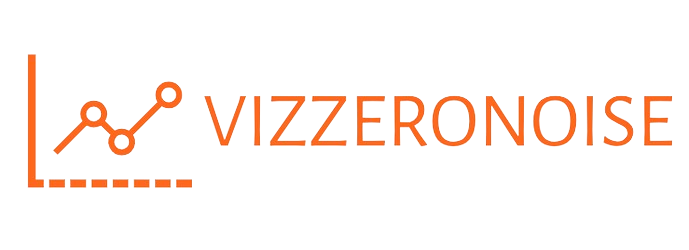Understanding CPI Inflation Rate Trends
Introduction
In today’s economic landscape, one of the most crucial indicators that economists, policymakers, and investors closely monitor is the Consumer Price Index (CPI). Understanding CPI inflation rate trends is essential for making informed decisions regarding monetary policy, investment strategies, and assessing the overall health of an economy.
What is CPI?
At its core, the Consumer Price Index (CPI) is a measure that examines the weighted average of prices of a basket of consumer goods and services, such as transportation, food, and medical care. It serves as a key indicator of inflation, reflecting changes in the cost of living over time. Governments and central banks worldwide rely on CPI data to formulate monetary policies and adjust interest rates accordingly.
The Importance of Tracking CPI
Tracking CPI inflation rate trends is vital for several reasons. Firstly, it provides valuable insights into the purchasing power of consumers. When CPI rises, it indicates that the general level of prices for goods and services is increasing, which can erode consumers’ purchasing power over time. This, in turn, affects consumer behavior, spending patterns, and overall economic activity.
Impact on Monetary Policy
Central banks, such as the Federal Reserve in the United States, closely monitor CPI inflation rate trends to gauge the level of inflationary pressures in the economy. If CPI consistently exceeds the central bank’s target rate, it may prompt policymakers to implement contractionary monetary policies, such as raising interest rates, to curb inflationary pressures and maintain price stability.
Inflation’s Effect on Investments
Understanding CPI inflation rate trends is crucial for investors as well. Inflation erodes the real value of investments over time, as the purchasing power of money decreases. Therefore, investors need to consider inflation when making investment decisions to ensure that their portfolios can outpace inflation and preserve their wealth in real terms.
Sectoral Impacts
Moreover, CPI inflation rate trends can vary significantly across different sectors of the economy. Some sectors may experience higher inflation rates due to factors such as supply chain disruptions, changes in consumer preferences, or regulatory changes. Understanding these sectoral differences in inflation can help businesses make strategic decisions and adjust pricing strategies accordingly.
Global Perspectives
In today’s interconnected world, CPI inflation rate trends in one country can have ripple effects across the globe. Changes in CPI can impact currency exchange rates, trade balances, and international competitiveness. Therefore, global investors and policymakers closely monitor CPI data from major economies to assess the broader economic landscape and identify potential risks and opportunities.
Challenges in CPI Measurement
Despite its significance, measuring CPI accurately poses several challenges. The composition of the CPI basket and the weights assigned to different goods and services may not accurately reflect changes in consumer spending patterns. Additionally, factors such as quality adjustments, substitution bias, and new product introductions can complicate CPI calculation and interpretation.
Inflation Expectations
Another crucial aspect of understanding CPI inflation rate trends is considering inflation expectations. People’s expectations about future inflation can influence their behavior, such as wage negotiations, investment decisions, and spending habits. Central banks often communicate their inflation targets to anchor inflation expectations and maintain price stability.
Policy Responses to Inflation
When CPI inflation rate trends deviate from policymakers’ targets, they may employ various policy tools to address inflationary pressures. These tools include adjusting interest rates, implementing open market operations, or using unconventional monetary policies such as quantitative easing. The effectiveness of these policy responses depends on various factors, including the underlying causes of inflation and the state of the economy.
Conclusion
In conclusion, understanding CPI inflation rate trends is essential for various stakeholders, including policymakers, investors, and businesses. By monitoring CPI data and its implications, stakeholders can make informed decisions to navigate economic uncertainties, mitigate risks, and capitalize on opportunities in today’s dynamic global economy. Read more about cpi inflation rate
boydmillerwebdesign.com
homenest.my.id
resumelanguage.net
bayanescorts.net
beautifulnhealthy.com
greatblogabout.org
lucasbarrios.com
thecelebrityplasticsurgery.com
rodatayu.my.id
dataharza.my.id
botanicalslimmingsoftgelsell.com
essayoutlinewritingideas.com
dragonsupport-number.com
7makemoneyonline.com
dearakana.my.id
pelionchess.com
ellectorquellevasdentro.com
firstbasegloves.net
jetcheck.net
www.cleverscale.com
highpointfamilylaw.com
supportsolutionspanama.com
careerth.com
casinocrazehub.my.id
healthpulsepoint.my.id
healthvigorville.my.id
healthvitalityvault.my.id
homecrest.my.id
luckystreakcasino.my.id
openlanez.my.id
www.preferredstocketf.org
www.riverstonenetworks.com
cheapcarinsurancehints.com
evolutiongrooves.com
higdonstoilets.com
home-radiators.com
krasnaya-verevka.com
manufacinst.info
offroadtaxi.net
paydayloanslts.com
solarhelp.info
beverlytoddonline.com
dimensionesanitaria.net
festivalboudenib.org
imexassociates.com
licensedinsurerslist.com
myownperfectsite.com
paydayukloan.com
playassustentable.com
pudacanmanel.com
rentpuntacana.com
www.unmondeapartager.org
dailypanchayat.com
declainelaw.my.id
dilectus.my.id
exprimamedia.com
healthelevate.my.id
homecontractorhub.info
homeservices.my.id
jerseysinc.net
josslawlegal.my.id
lastlongerrightnow.com
legalatternoynews.my.id
lianlegal.my.id
lrvconstructora.com
machinegunsandacameralens.com
mokadatara.my.id
www.itcertsbox.com
zacloudta.my.id
acnerimedi.net
aracatinet.com
benefit4bianca.com
bma-unleash.com
bmg-qatar.com
cogniflexreview.com
doutzenkfanpage.com
healthcares.my.id
ninthworldhub.com
nolvamedblog.com
patricketsesfantomes.com
reltix.net
rf-summit.com
rhythmsofmanipur.com
tankionlineaz.com
thejuon.com
thietbidinhvithongminh.com
walenshipnigltd.com
womenshealthandstyle.com
www.admission-prepas.org
www.igaseng.com
www.itcertswin.com
www.nikezoomruntheone.com
a10yoob.com
castlemanager.net
chesscontinental.com
classiccinemaimages.com
eleaseit.com
faberlic-zp.com
fundyourpurpose.org
galaxys9.net
goodchildhomes.net
insightintolight.com
lifehealthhomemadecrafts.com
myshirtmaker.net
paydayloansnow24h.com
proyectonuevaera.com
quantumrareearth.com
sunglasses-outlet.net
teevio.net
vexhibits.com
wallscreenhd.com
waslinfo.org
writemyessay-site.com
coachfactoryoutletcio.com
friv2k.com
greencitizens.net
kobebryantshoes-inc.com
itexamscert.com
kayakuliner.com
dylanmessaging.com
alnewgetinfo.my.id
businessfinancee.my.id
copadosrefugiados.com
ctproductsandservices.com
dead-samurai.com
futuresearchzambia.org
jlawrencebrasil.com
oofamily.com
ravintolapaiva.com
servicesrecommended.com
shoppingtimes.my.id
tanktroubleplay.com
thehealthyconsumer.com
unfairmarioplay.net
lille-place-juridique.org
prairiefirepointersupply.com
trekvietnamtour.net
twitterconcepts.com
volumehaptics.org
ce1h.com
firstbisnisku.my.id
healcoradata.my.id
health-sourcing.com
holideey.com
horelegal.my.id
jetdesignhome.my.id
keozanara.my.id
wickedfacts.com
woazala.my.id
coexist-art.com
dealstr.net
homecontractorzs.info
montrealcanadiensteamshop.com
mrsocialguru.com
ruxianaiyaopin.com
traveltrekker.my.id
cheap-jordanshoes.net
shopgioia.com
socialfacepalm.com
aceofspadescasino.my.id
casinoroyalenet.my.id
eliteflow.my.id
fashionfiestas.my.id
fashionfrenzy.my.id
fashionfusion.my.id
fashionfusionista.my.id
fortahira.my.id
guestpostbro.com
homecozy.my.id
homeecho.my.id
homeglow.my.id
homeharbor.my.id
homevibes.my.id
homeyhaven.my.id
insuranceguardian.my.id
insurancesentry.my.id
jackpotjunctioncasino.my.id
joscorena.my.id
novovent.my.id
pinpointz.my.id
resolveid.my.id
travelexplorer.my.id
traveljourneys.my.id
traveltrailblazer.my.id
travelwanderer.my.id
vizzeronoise.my.id
800support.org
ampedandalive.com
diepios.com
freeshort.org
kangzenathome.com
link-building-service.info
lynnwoodlocksmithpro.com
paydaycashloan8pf.com
tiny-planes.com
yakimafutures.com
alternativemediasyndicate.net
astroidit.com
businessinc.my.id
corpodaration.my.id
fseg-tlemcen.com
indidesignhome.my.id
mangamofo.com
misuperweb.net
petuniapicklebottom.org
sisclodxe.my.id
previousplacementpapers.com
breakingwrestlingnews.com
bridgepark.my.id
dapperdayz.my.id
fashionflare.my.id
fashionfrontier.my.id
healthmavenmind.my.id
healthwisehub.my.id
insurancefortress.my.id
insurancevaults.my.id
travelvoyage.my.id
mhrestaurants.com
catmario4.org
cloudfeed.net
conversebyky.com
excentra.my.id
goldengamblearena.my.id
insurancehub.my.id
insuranceshields.net
pivotpower.my.id
primeforge.my.id
studentals.net
motox3m2.com
designingtemptation.com
enlignefrsports.com
fireboyandwatergirlplay.com
firstbusineservice.info
homeinharmonia.com
neveremptyapp.com
newpaltzhealthandnutrition.com
sanka7a.com
southernpridepaintingllc.com
vrbp.org


